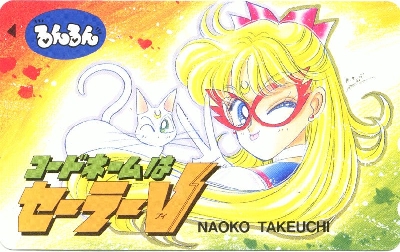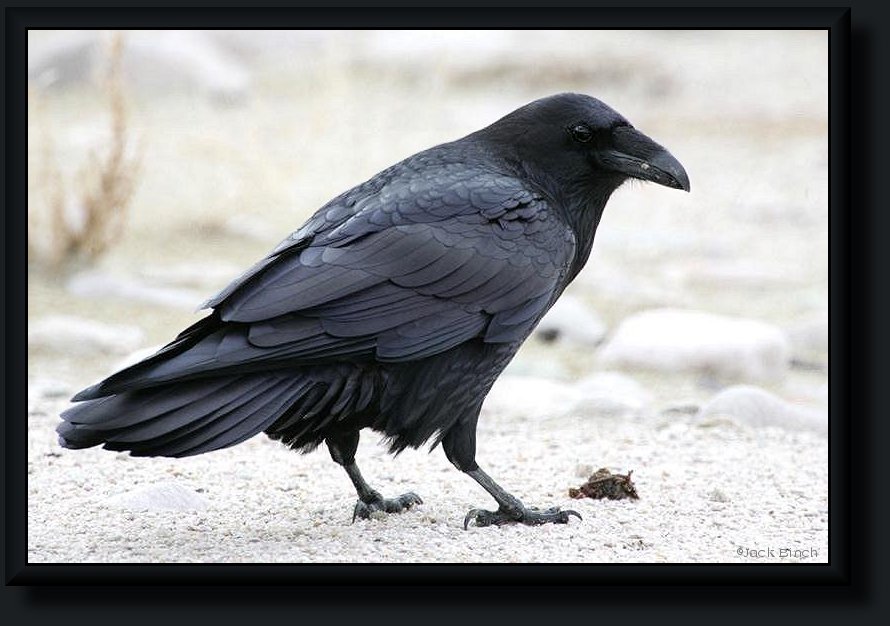Post by crowhats on Oct 21, 2011 11:25:27 GMT -5

Many people are probably aware that when I wrote this review the new Sailor Moon manga was a booming success for Kondancha, and actually sold out it’s first printing less then a month after release. What many people might not be aware of, however is that Kondancha has also released simultaneously the prequel to Sailor Moon (and subject of this review), entitled Codename Sailor V. This series focuses around the female super-heroine that made many cameos many within Sailor Moon, and who helped inspire Usagi the lead character of Sailor Moon. While I did find Code Name Sailor V a fun read, I didn’t feel it was nearly as original or interesting a book as Sailor Moon and it did have a few major problems. Still for fans of the magical girl genera it is well worth looking into this manga, despite it not being as interesting as it’s predecessor is.
Naoko Takeuch has a special knack for really interesting artwork. Her art is very much drawn within a classical shojo atheistic. Some shojo features she used in the art included long lanky character designs (though not nearly as lanky as some other shojo works) with large eyes and pretty dream like backgrounds. The background details were used sparingly, but were also used very appropriately. Another interesting aspect of this work is it’s use of chibi to designate a comedy relief character or during some scenes that involved comedy. I only could find two possible major complains about the art-style for this work. One is that the art is very much in a shojo style, and secondly that the panels are sometimes crowded. While I wasn’t really put off by this manga’s style, others who dislike a more conventional shojo style might not enjoy the art. If you don’t like the art of this work though, then chances are that you aren’t going to enjoy the shojo style of the work in general. The second major problem with this title’s art is that at times the art feels crammed. So much is going on within certain panels that occasionally the art feels to busy. If you happen to be a fan of shojo style artwork at all, then chances are that you’ll love the art-style of this book.
Codename Sailor V is very similar in tone and story to Sailor Moon, and was actually the basis for a number of early episodes of the Sailor Moon anime series. The premise for Code Name Sailor V is very simple, and somewhat similar to Sailor Moon. It stars Minako Aino (who would later go on to become Sailor Venus in the Sailor Moon series) an energetic junior high school student who is selected by the spirit of the planet Venus to be a guardian of the earth against the Dark Agency. She discovers a talking cat Artemis who gives her a magic pen, and other magical devices that help her transform into the super-heroine Sailor V. Her objective is to use her powers to defend the world from the corrupting hypnosis of the evil Dark Agency. Much to Artemis annoyance though, Minako is not always the best guardian, and frequently is side tracked from her missions. Many times it takes Artemis and/or the mysterious boss characters to get her to recognize the evil of a Dark Agent, but she wastes no time in battling this evil once it is revealed to her.
Where this book differs from Sailor Moon is in four key ways. Firstly off the plot for Codename Sailor V is episodic, and each story is pretty much a stand alone story. Each new adventure usually has a new villain for her to do battle with, which is sent by the Agency to brain wash people. Secondly, unlike the characters in Sailor Moon, Sailor V doesn’t really work with anyone other then her mascot Artemis and the mysterious boss character. Although, characters do reoccur in the work they are usually are added for comedy relief, or plot exposition rather then as a major part of the work. The third difference is that this work is much more predictable, because of it’s episodic format. Usually the story involves Minako finding a problematic icon from the Dark Agency that is hypnotizes people, and after some running around and comedy defeats this being. This formulaic process is probably the biggest weakness of the work, and doesn’t allow for the story to ever really change or to have any major surprises. The final difference has to do with the tone of each work. Although sometimes stories of Code Name Sailor V focus on themes such as team work, friendship, and romance which are commonly featured within Sailor Moon, this manga usually focuses much more on fast action packed comedy.
What I really love about this book the most, which is also a key element in Sailor Moon as well is it’s emphasis on a super hero story that is aimed at girls. This is sadly something rarely seen in modern American super hero comics, which are more focused upon more grin stories aimed at older male readers. This focus toward young women makes both of these works much more light hearted, fun, and inclusive of larger demographics then most American works currently being released. This combination of Shojo and super hero themes really makes both Sailor Moon and Codename Sailor V good reads for fans of either or both genera’s, and/or for those who are put off by the current direction of most super hero comics.
The character’s of Codename Sailor V consist of Minako, her animal sidekick the talking cat Artemis, a attractive seeming villain sent by the Dark Agency, the police force and some other reoccurring side characters. The most important character of this entire work is obvious Minako, who goes by the super heroine disguise of Sailor V. Minako is somewhat similar to Usagi from Sailor Moon in that she is a poor student, lazy and is addicted to arcade games. Despite these shared traits, however Minako is clearly a very different character being much more energetic, athletic, confident, selfish and chipper then Usagi usually is, and is less apt to cry about her position or to work well with others. Minako’s positive attitude makes this title more upbeat then Sailor Moon is, and make her the ideal lead for the comedic feel of this work. I also like how she isn’t portrayed as the perfect sort of lead character, and uses her powers often in self interested ways, such as using her magic pen to ace her make up tests. This makes her a good foil for her animal sidekick Artemis. Artemis is often disappointed in Minako’s selfish behaviors and the misuse of her powers, and he often scolds her for her greedy behavior wishing that she would be more heroic. He also is the voice of reason, and helps point out to her sources of evil and how to be good hero (help that she usually needs, but isn’t always prone to pay attention to). Not much is known about the boss character of the story yet, however it is clear that it is someone mysterious who is helping Sailor V hunt down evil, and that not much will be revealed about this character any time soon.
The villains sent by the Dark Agency have thus far been single story characters (only volume one is included in this review). Usually they are villainous pop-stars, but they can also take the form of other popular icons. The Dark Agency’s goal is to turn people into slaves, who mindlessly worship them and have them eventually help them take over the Tokyo (and then move on to the world). To do this their agents appear as attractive popular figures, and then use brain washing powers to ensnare victims in their charm. They are then defeated by Sailor V, who often uses her mirror to expose their real monstrous forms and vanquish them. These Dark Agent characters are the weakest characters in the series since their goals are so predictable, and because they are sounded defeated within a single story and don’t really develop into a major figures or threats.
The other characters of the story are mostly around for comedy and story purposes. The most common of these characters found later in the manga are the police detective Toshio Wakagi who hates Sailor V for solving crimes before the police, and Natsuna Sakurada the superintendent-general of the Metropolitan Police Board who is his boss and secretly adores Sailor V. These two characters were really great characters, because they explained the police reaction to Sailor V in a realistic and comical way, and also because they were both good foils for one another. Another reoccurring character that was interesting was Minako’s mother, who was based upon Takeuchi's own mother. The mother usually disciplines Minako for some of her bad actions, but it is clear that her personality is in many ways comically similarly to her daughter’s. The last two characters that reoccur, and that are really worth mentioning are the comic relief nerd Gurikazu Amano, who is too much of a geek to usually be hypnotized by the Dark Agents, and Motoki Furuhata the local young arcade owner working where the Sailor V’s secret base is hidden and a possible love interest. While many of the characters in this series don’t add much to the overall plot, the leading cast is strong and the supporting cast adds to the humor nicely.
While Codename Sailor V is definitely not as inspired as it’s counter part Sailor Moon, it still is enjoyable to fans of this genera of work. It’s art is definitely creative, it’s storyline is fast paced and it’s lead is good enough to overcomes formulaic elements of the work. It’s combination of the shojo and super-hero genera remains extremely engaging, as does it’s whimsical sense of humor. While this work is definitely a lot of fun and I did really enjoy it, it is also an acquired taste and I wouldn’t recommend this work everyone for that reason. I would definitely recommend buying this work though if you enjoy shojo works or the Sailor Moon manga/anime.


